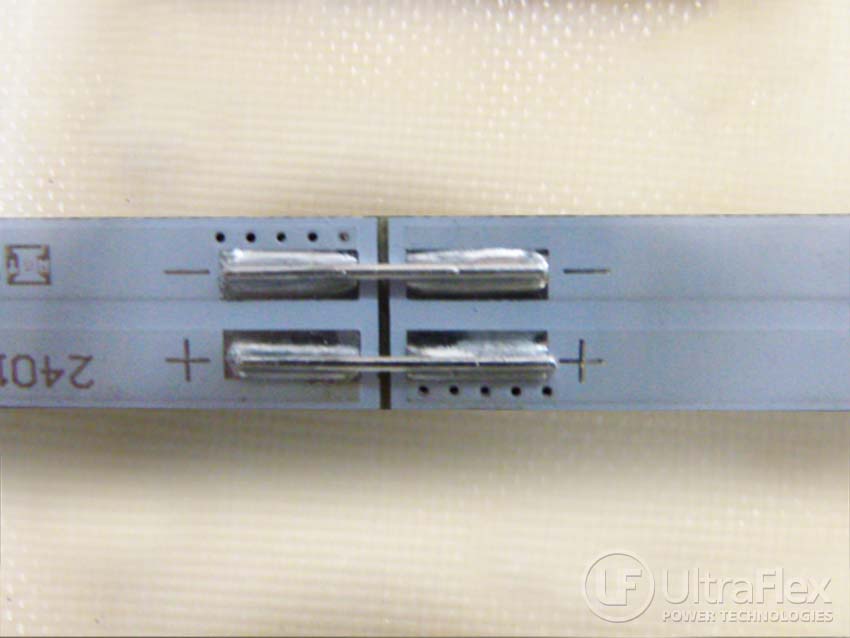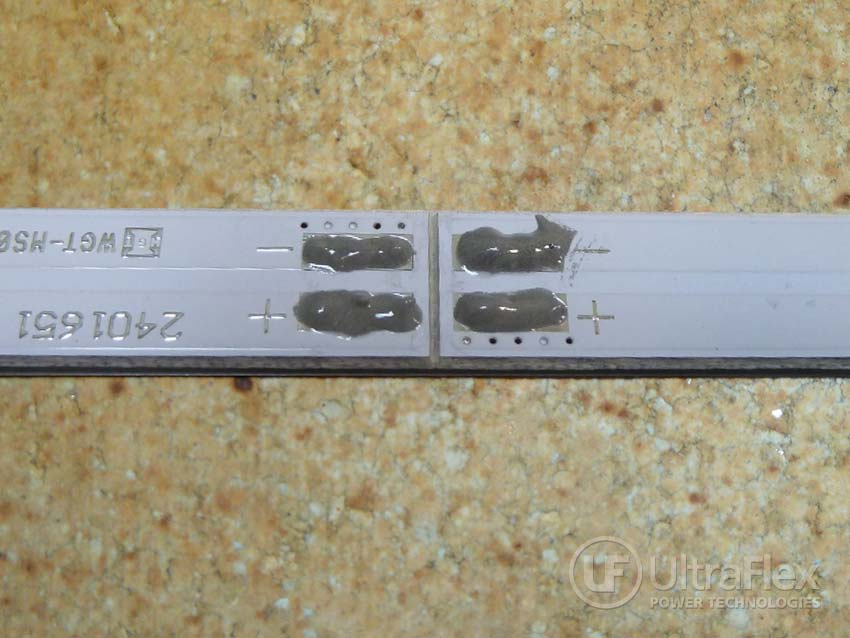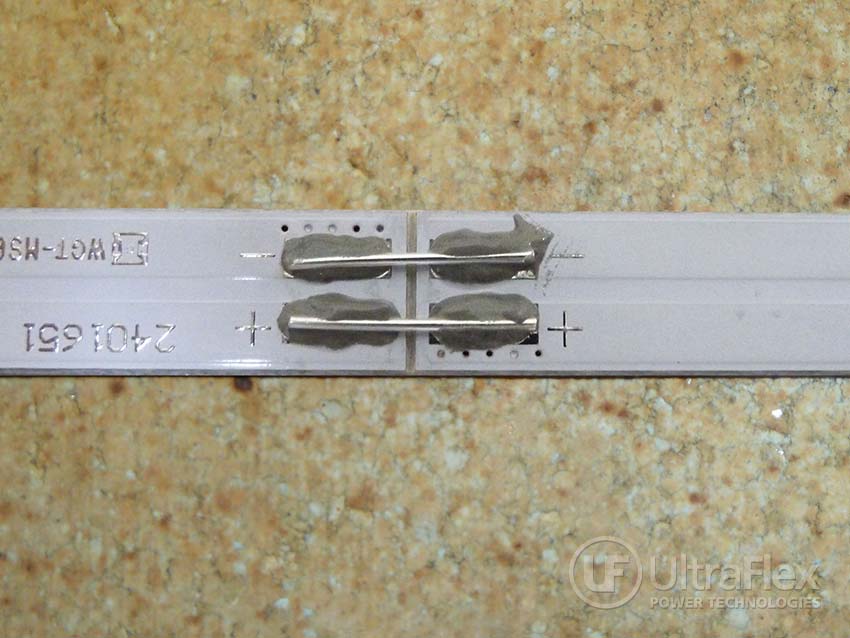The customer previously used a manual solder process, with the time to join 7 PCB’s 1 minute 45 seconds. This is just the solder time, and does not include the time to apply the solder paste and place the jumper across the PCBs in the paste. Our goal is to use induction soldering to reduce the cycle time while producing a high quality solder joint.
 |
| Jumpers are used to solder two adjacent PCB's together. Using Induction, the time to solder 7 boards has been reduced from 105 seconds to 12 seconds. |
Equipment
Materials
• Soldering wire
• Soldering paste
• Soldering paste
Application of the solder paste with a stencil is recommended. This will provide improved process control, better repeatability, and avoid any residues.
Key Parameters
Temperature: 300° C
Power: 3 kW
Time: 2 sec to join two boards; 12 seconds to join 7 boards (this is an 89% reduction in the time it previously took to solder the 7 boards).
Power: 3 kW
Time: 2 sec to join two boards; 12 seconds to join 7 boards (this is an 89% reduction in the time it previously took to solder the 7 boards).
Frequency200 kHz
Process:
- Apply the solder paste on the pads of the printed circuit boards.
- Place the copper jumpers in the solder paste across the pads of the adjacent PCBs.
- Position the induction coil over the copper jumpers and pads.
- Apply power to the UPT-S5, and heat for 2 sec. That’s the time to heat one joint, and join 2 boards.
- Confirm electrical continuity of across the jumpers by testing LED’s on the printed circuit boards.
Results/Benefits:
Induction heating provides:
- Strong durable joints
- Selective and precise heat zone, resulting in less part distortion and joint stress
- Less oxidation
- Faster heating cycles
- More consistent results and suitability for large volume production, without the need for batch processing
- Clean and safe heat application, without pollutants
Video of the Soldering Process
Pictures of the Soldering Process
 |
| Solder paste is applied to the pads of the PCBs to be joined. |
 |
| The jumper is positioned across the PCBs in the solder paste. |
 |
| The boards are positioned under the Induction Coil for soldering. |
 |
| The finished solder joint. |

No comments:
Post a Comment